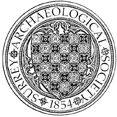17th century
Clockhouse Brickworks, Capel
Eastgate House, 225 High Street, Guildford
192–194 High Street, Guildford
Nurses Cottage, Old Palace Road, Weybridge
Cherry Cottage, Dowlands Lane, Copthorne
Home Farm, Albury
Bridge Wharf, Chertsey
Farnham Castle, Farnham
Evaluation by D Graham of SyAS to examine the condition of the southern curtain wall and inform remedial works. The remains of an earlier, possibly 17th century, retaining wall was revealed. (396)
Farnham Castle, Farnham
Watching brief and resistivity survey by D Graham of SyAS during topsoil removal to create additional car parking spaces. The site lies outside the area of the former (now filled in) inner bailey ditch, and no features were detected. A number of finds were recovered during the topsoil removal, however, including a number of musket and pistol balls, and three powder caps from gunpowder flasks. An incursion of parliamentary forces into the castle courtyard occurred on 26 November 1642, with the royalist garrison surrendering as a result.


